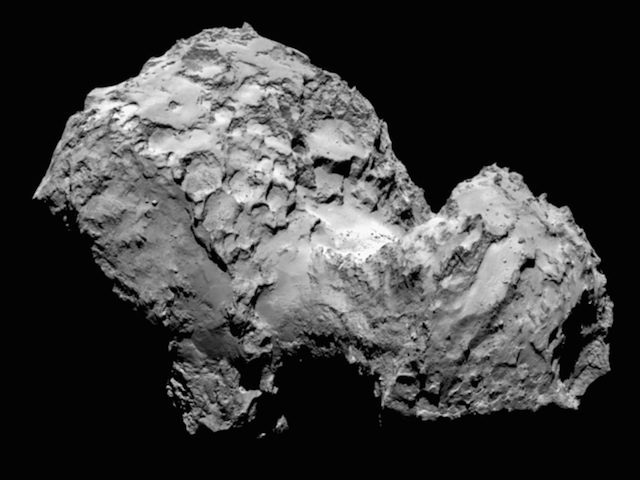SUMMARY
This is AI generated summarization, which may have errors. For context, always refer to the full article.

PARIS, France – The European Space Agency (ESA) confirmed Wednesday, October 15, its choice of the site for a historic unmanned landing next month on a comet in deep space.
A fridge-sized scout, Philae, will attempt to touch down on “Site J”, the first choice for a landing spot on Comet 67P/Churyumov-Gerasimenko, it said in a statement.
The November 12 operation marks the first-ever attempted soft landing on a comet, and scientists hope it will unlock secrets of the Solar System.
Comet “67P” is made of two lobes joined by a narrow neck, giving it a silhouette roughly resembling that of a rubber duck.
“Site J” is located on the smaller lobe or “head”, roughly where the duck’s forehead would be, while a backup, “Site C” is located on the larger lobe.
“Now that we know where we are definitely aiming for, we are an important step closer to carrying out this exciting — but high risk — operation,” said mission manager Fred Jansen.
“However, there are still a number of key milestones to complete before we can give the final Go for landing.”
The landing is the high point in a mission that goes back to 1993, when it was approved.
Philae has been piggybacking on an orbiter called Rosetta, which caught up with the comet in August after a 10-year, six-billion-kilometer (3.7-billion-mile) chase.
Right now, Rosetta is circling the four-km comet at an altitude of 10 km.
If all goes according to plan, Rosetta will release Philae at 0835 GMT on November 12 at a distance of 22.5 kilometers (13.9 miles) from the comet’s centre, to land seven hours later, at about 1530 GMT.
The operation will take place more than 450 million kilometers from Earth, which means signals will take 28 minutes and 20 seconds to travel home.
Rosetta is equipped with 11 cameras and sensors that have already yielded dramatic images of the comet, including the discovery that it is extraordinarily black.
But experts are hoping for even bigger discoveries from the 10 instruments aboard Philae.
The 100-kilogram (220-pound) lab is designed to harpoon itself to the comet’s surface before driving in screws for better grip.
It will then carry out chemistry experiments, including analysis of samples drilled from the comet’s crust.
Comets are icy bodies born along with the Solar System some 4.6 billion years ago.
Some astrophysicists speculate that, by smashing into an infant Earth, comets provided ice and the molecular building blocks for kickstarting life. – Rappler.com
Add a comment
How does this make you feel?





There are no comments yet. Add your comment to start the conversation.